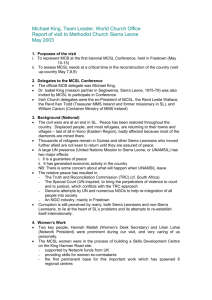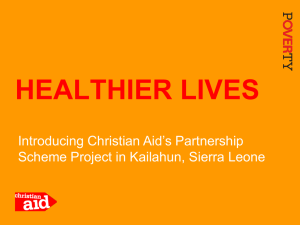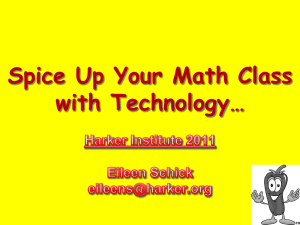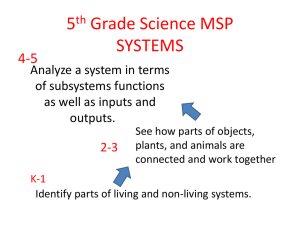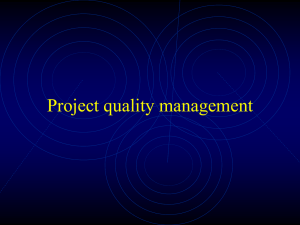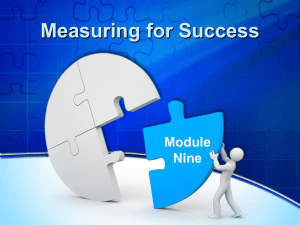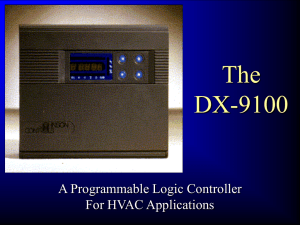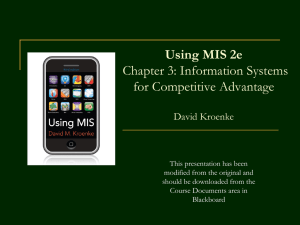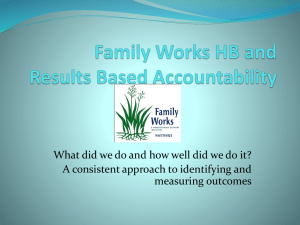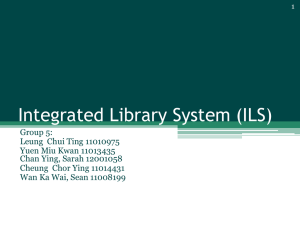CEUG Presentation 2013 - Millennium Software and Service Solutions
advertisement
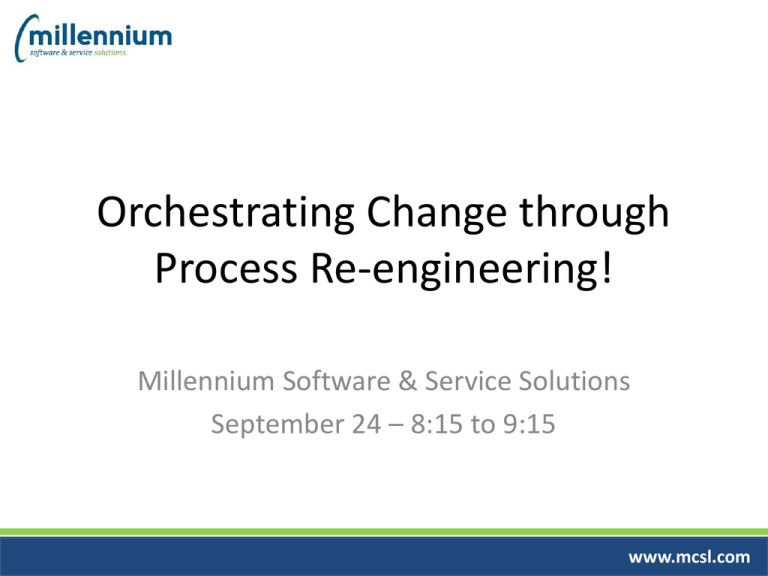
Orchestrating Change through Process Re-engineering! Millennium Software & Service Solutions September 24 – 8:15 to 9:15 www.mcsl.com Presentation Agenda 1. 2. 3. 4. 5. 6. 7. 8. 9. Process Mapping – what is it? Why do we do it? How do you know if you need to map a process? What are some of the common tools/techniques? What are some of the basic steps to mapping? How do we keep improving and test the change? How do we get from conceptual to reality? What else is happening at Millennium? Questions/Discussion www.mcsl.com What is Process Mapping? “any method that is used to create comprehensive, visual outlines or outputs of any process that consumes specific inputs to create specific outputs” www.mcsl.com Why do we do it? • • • • to let stakeholders see and help them understand all the relevant components (ICOR’s) of a process to identify opportunities for streamlining and removing bottlenecks and to know what is working well to more fully understand the up and downstream implications, stakeholders and touch points of a process to create knowledge and understanding amongst all the stakeholders of the end to end process www.mcsl.com How do you know if you need to map? 1. Are there problem areas that have been raised within you business units 2. Are you getting complaints from external users (faculty, students, public) about services 3. Do you have areas or services that are constantly backed up or unable to keep up 4. Do you have data for inconsistencies, incompleteness or inaccuracies 5. Are there lots of shadow systems or workarounds www.mcsl.com Some Common Tools and Techniques 1. 2. 3. 4. 5. Flow Charting Dynamic modelling Brainstorming Process Swim lanes DRIVE diagrams (define, review, identify, verify and execute) 6. LEAN – BPI and LSS techniques 7. ICOR (inputs, controls, outputs, resources) www.mcsl.com High Level BPM Approach www.mcsl.com www.mcsl.com Mapping your process……. 1. 2. 3. 4. 5. 6. Identify all the inputs, controls, outputs and resources associated with the holistic process Identify all the key resources/stakeholders that are involved in the process Bring together a fairly broad stakeholder group to brainstorm all activities that occur within the scope of the process Group the activities in 4-6 key sub-processes (varies) Identify the sequence of events and links between the processes and sub-processes Define a high level process map and sub-process map using the methodology of your choice……..and then…….. www.mcsl.com Mapping your process……..continued…… 1. Start to map your sub-processes and identify where the work is occurring 2. Begin to identify themes or areas of focus that need to be considered as you think about ‘future state’ 3. Meet with smaller focused teams to review sub-process areas and to drill into the details for each sub-process area 4. Map out the high level, sub and inter-related process areas 5. Identify pinch points, bottlenecks and opportunities upstream and downstream to focus on for optimization and maximization www.mcsl.com Continuous Improvement Approach www.mcsl.com How do we implement and test the change? Feedback and incremental, continual small tests of change allow for reflection and feedback to continually improve processes www.mcsl.com Moving from Design to Implementation www.mcsl.com Continuous Improvement Life Cycle There are many methodologies or approaches that can be used to engage in continuous improvement – pick one that works for your institution and use it! www.mcsl.com Manage the change for process sustainability! 1. 2. 3. 4. 5. Formulate the change Plan the change Implement the change Manage the change transition Sustain the change www.mcsl.com Transformation from concept to reality….. Activities will occur in the various business areas throughout the change process but the key is getting all of them to future state! www.mcsl.com Many of our clients are engaged in transformation projects! Academic • University of the Fraser Valley • Vancouver Island University • Okanagan College • University of Victoria • University of Northern British Columbia • Thompson Rivers University • Wilfred Laurier University • University of British Columbia – Northern Medical Program Health • Northern Health • Interior Health www.mcsl.com What else is happening at Millennium? Reporting Applications • Finance • Student • Human Resources and Payroll Data Entry Applications • Web Requisitioning • Budgets • PCARD • Journal Voucher • Accounts Receivable • Research Administration www.mcsl.com Thanks for coming? Questions? Contact us at: • Lynda Pattie – lynda@mcsl.com • Peter Gray – pgray@mcsl.com • Peter Bruynzeel – peteb@mcsl.com • Rob McMicking – rob@mcsl.com www.mcsl.com
